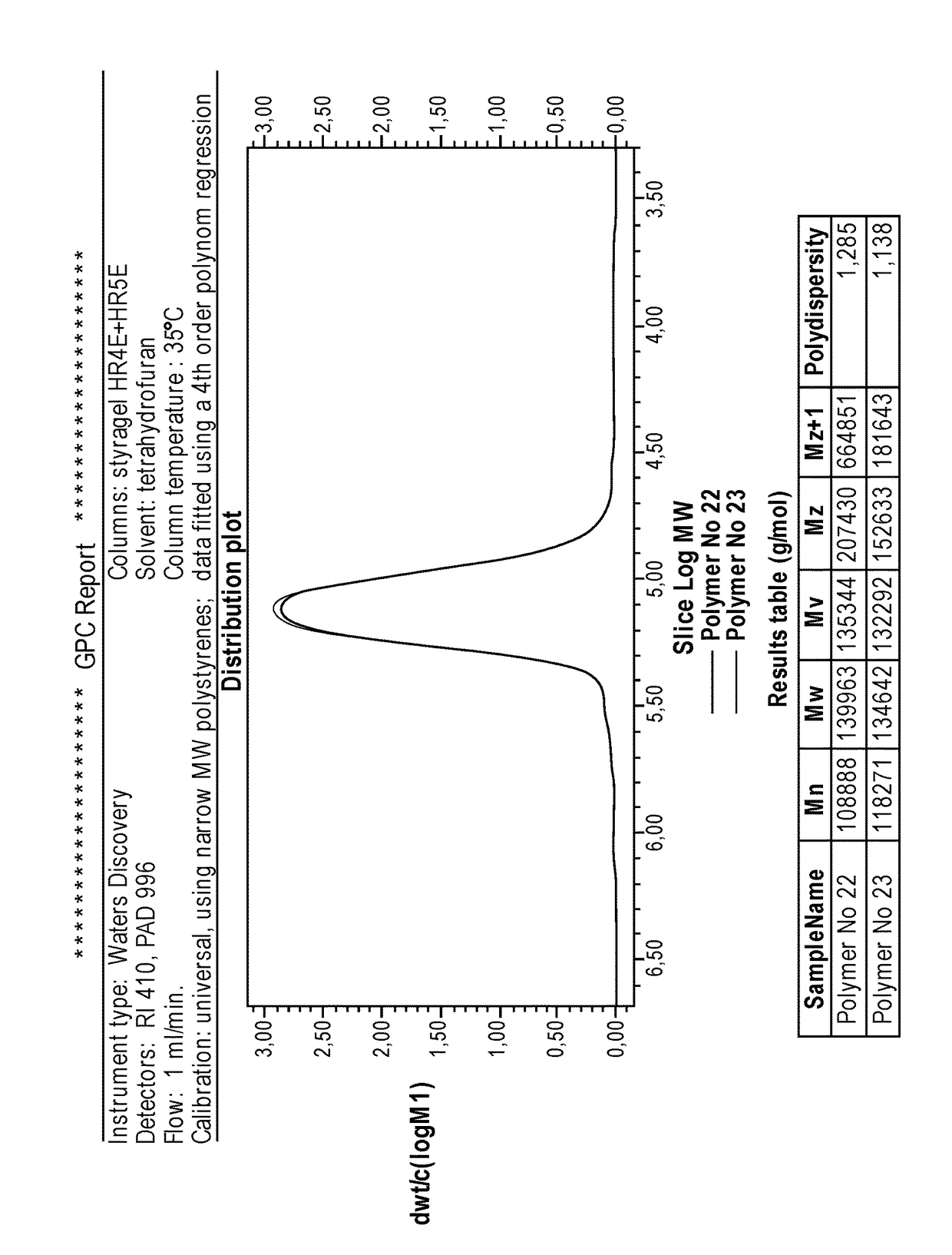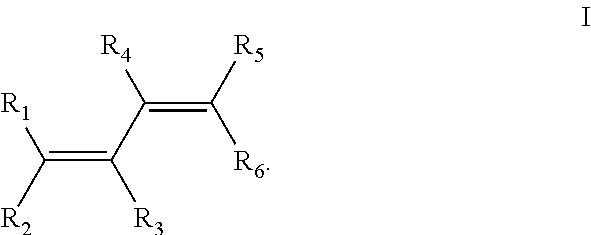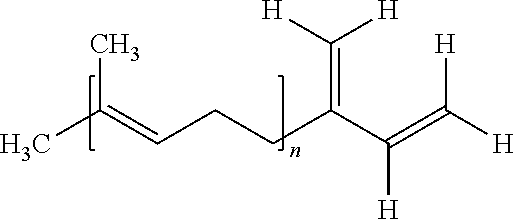Dilithium initiators
a technology of initiators and dilithium, which is applied in the direction of hydrocarbon polymer adhesives, adhesive types, adhesives, etc., can solve the problems of limiting the application of oligomers and polymers, high glass transition temperature, and high vinyl incorporation of products
- Summary
- Abstract
- Description
- Claims
- Application Information
AI Technical Summary
Problems solved by technology
Method used
Image
Examples
example 1
Polymerization with Dilithio Initiator Derived from Farnesene
Initiator
[0101]A 1500 ml sulfonation flask equipped with agitator and submerged cooler, under argon blanket, was charged with 555 g MTBE and 39 g lithium in the form of 10 mm granules (See Table I, Example No. 1). Under agitation at temperature 2-3° C., farnesene—mixture of isomers, Kosher quality W383902, as obtained from Aldrich lab chemical supplier, was slowly added using a pump. Gas chromatography revealed 6% of trans beta-farnesene in the mixture. The solution color changed to yellow immediately after the start of the addition. 70.9 g of farnesene was added during 18 hrs. Then after 1 hr the stirrer was stopped, thereby allowing the lithium metal to flow up. The dirty yellow liquid initiator under the lithium layer was pressure transferred to flask stored at −3° in refrigerator. 4.742 g initiator was transferred by syringe into 10 ml of ethyl alcohol. The consumption of 0.1 N HCl by titration to phenolphthalein was 1...
example 2
Polymerization with Dilithio Initiator Derived from Farnesene with Naphthalene as Catalyst for Initiation
[0104]The initiator was prepared in a similar manner as described in Example 1 with the difference that naphthalene was added to the reaction mixture. Please see Table 1, Example 2 for details for the amounts of reagents used. A dark brown solution was obtained containing 0.4 mmol / g Li and 0.33 mmol / g C—Li. The molar yield of C—Li to farnesene was 60%. The initiator was then used to prepare propylene oxide terminated polybutadiene in procedure similar to Example 1. The characteristics of the polymer obtained are shown in Table 2, Polymer No. 2.
example 3
Polymerization with Dilithio Initiator Derived from Beta-Myrcene
[0105]The initiator was prepared in a similar manner as described in Example 1 with the difference that beta-myrcene was used instead of farnesene-mixture. The used volumes of reagents are shown in Table 1, Example 3. A dark brown solution was obtained containing 0.54 mmol / g Li and 0.52 mmol / g C—Li. The molar yield of C—Li to beta-myrcene was 87%, which corresponds to initiator structure of dilithiodimer (Li-MM-Li). After dilution with MTBE, the initiator was used to prepare propyleneoxide terminated polybutadiene. The characteristics of the polymer obtained are shown in Table 2, Polymer No. 3.
PUM
| Property | Measurement | Unit |
|---|---|---|
| particle size | aaaaa | aaaaa |
| particle size | aaaaa | aaaaa |
| particle size | aaaaa | aaaaa |
Abstract
Description
Claims
Application Information
 Login to View More
Login to View More - R&D
- Intellectual Property
- Life Sciences
- Materials
- Tech Scout
- Unparalleled Data Quality
- Higher Quality Content
- 60% Fewer Hallucinations
Browse by: Latest US Patents, China's latest patents, Technical Efficacy Thesaurus, Application Domain, Technology Topic, Popular Technical Reports.
© 2025 PatSnap. All rights reserved.Legal|Privacy policy|Modern Slavery Act Transparency Statement|Sitemap|About US| Contact US: help@patsnap.com



